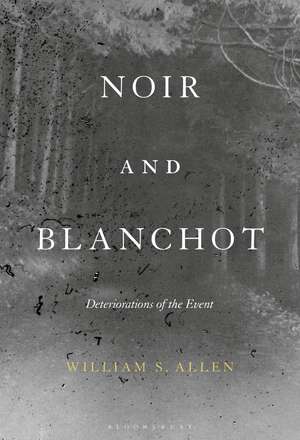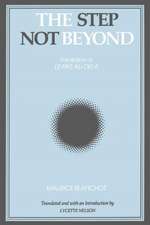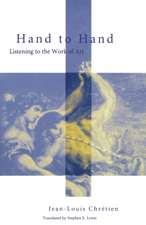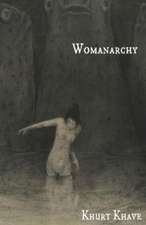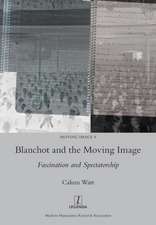Noir and Blanchot: Deteriorations of the Event
Autor Dr William S. Allenen Limba Engleză Paperback – 28 iul 2021
| Toate formatele și edițiile | Preț | Express |
|---|---|---|
| Paperback (1) | 216.08 lei 6-8 săpt. | |
| Bloomsbury Publishing – 28 iul 2021 | 216.08 lei 6-8 săpt. | |
| Hardback (1) | 567.58 lei 6-8 săpt. | |
| Bloomsbury Publishing – 22 ian 2020 | 567.58 lei 6-8 săpt. |
Preț: 216.08 lei
Preț vechi: 274.06 lei
-21% Nou
Puncte Express: 324
Preț estimativ în valută:
41.36€ • 44.94$ • 34.76£
41.36€ • 44.94$ • 34.76£
Carte tipărită la comandă
Livrare economică 22 aprilie-06 mai
Preluare comenzi: 021 569.72.76
Specificații
ISBN-13: 9781501384639
ISBN-10: 1501384635
Pagini: 200
Dimensiuni: 152 x 229 mm
Greutate: 0.27 kg
Editura: Bloomsbury Publishing
Colecția Bloomsbury Academic
Locul publicării:New York, United States
ISBN-10: 1501384635
Pagini: 200
Dimensiuni: 152 x 229 mm
Greutate: 0.27 kg
Editura: Bloomsbury Publishing
Colecția Bloomsbury Academic
Locul publicării:New York, United States
Caracteristici
A novel exploration of the relation between Maurice Blanchot's works and film
Notă biografică
William S. Allen is an independent researcher at the University of Southampton, UK. He is the author of Ellipsis: Of Poetry and the Experience of Language after Heidegger, Hölderlin, and Blanchot (2007), Aesthetics of Negativity: Blanchot, Adorno, and Autonomy (2016), Without End: Sade's Critique of Reason (Bloomsbury, 2018), and Blanchot and the Outside of Literature (Bloomsbury, 2019).
Cuprins
AcknowledgementsList of Abbreviations1. Dark Time2. Ruptures and Deviations3. Chiaroscuro4. Between Deaths5. Damnation6. Rewriting HistoryNotesIndex
Recenzii
It is tempting to respond to dark times with the light of optimism. But as William S. Allen shows in Noir and Blanchot, this is to fall into the trap of darkness. In a pathbreaking exploration of using darkness to forge a way out of darkness, Allen brings together two unlikely allies - film noir and Maurice Blanchot - to disrupt the prevailing dark times.
Georges Bataille had compared Maurice Blanchot with the main character of Invisible Man, but nobody had dared pairing the elusive writer with film noir. Noir and Blanchot accomplishes this daring hermeneutic feat: it makes sense to read Death Sentence wedged between Double Indemnity and Vertigo. Not only are all three underpinned by Hegelian negation of negation, but also the Gothic features of Blanchot's narratives stand out. Thanks to Allen's brilliant insight, Blanchot appears less as a French Kafka than as a literary Béla Tarr.
William S. Allen once again shows himself to be an expert guide through the complexities of Blanchot's thought. In limpid and elegant prose, Noir and Blanchot engages an expansive range of references whose common element is the darkness of an age - an age that is still ours - in which existence goes on in the disaster of extreme alienation. Allen's prismatic readings of Blanchot show us as never before how to enter thinking into that darkness.
Georges Bataille had compared Maurice Blanchot with the main character of Invisible Man, but nobody had dared pairing the elusive writer with film noir. Noir and Blanchot accomplishes this daring hermeneutic feat: it makes sense to read Death Sentence wedged between Double Indemnity and Vertigo. Not only are all three underpinned by Hegelian negation of negation, but also the Gothic features of Blanchot's narratives stand out. Thanks to Allen's brilliant insight, Blanchot appears less as a French Kafka than as a literary Béla Tarr.
William S. Allen once again shows himself to be an expert guide through the complexities of Blanchot's thought. In limpid and elegant prose, Noir and Blanchot engages an expansive range of references whose common element is the darkness of an age - an age that is still ours - in which existence goes on in the disaster of extreme alienation. Allen's prismatic readings of Blanchot show us as never before how to enter thinking into that darkness.
